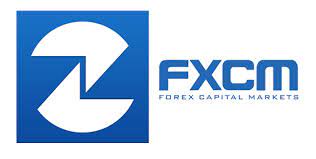
Advanced Forex Charting Techniques for Traders
Advanced charting techniques provide deeper insights into market behaviour in forex trading. These techniques help traders make more informed decisions, identify trends, and predict potential price movements. This blog will explain advanced charting techniques, including chart patterns.
Chart Patterns and Their Interpretation
Traders can predict future price movements if they recognise chart patterns. Patterns reflect the collective psychology of market participants and indicate potential trends or reversals.
These are some of the most common chart patterns:
Head and Shoulders
This pattern shows a trend reversal. It contains three peaks – a higher peak (head) between two lower peaks (shoulders). When the price falls below the neckline (a support level drawn through the lows of the shoulders), it implies a bearish reversal.
Also read, What is Forex Charting?
Double Top and Double Bottom
These patterns indicate potential reversals.
Double Top: Forms after an uptrend. Consists of two peaks at approximately the same price level. A drop below the support level (the low between the two peaks) suggests a bearish reversal.
Double Bottom: Forms after a downtrend. Consists of two troughs at approximately the same price level. A rise above the resistance level (the high between the two troughs) indicates a bullish reversal.
Find the ideal trading and liquidity partners and become a part of the global network of professionals now!
Triangles
Ascending Triangle: Bullish pattern with a rising lower trendline and a flat upper trendline.
Descending Triangle: Bearish pattern with a falling upper trendline and a flat lower trendline.
Symmetrical Triangle: Indicates a continuation pattern with converging upper and lower trendlines.
The breakout direction (above resistance for ascending, below support for descending) confirms the pattern.
Flags and Pennants
Flags: Short-term continuation patterns that appear as small rectangles sloping against the prevailing trend.
Pennants: Small symmetrical triangles that form after a sharp movement in price.
Both patterns indicate a brief consolidation before the trend resumes in the same direction.
Advanced Charting Techniques
Here are some advanced charting techniques that traders should consider:
Fibonacci Retracement Levels
Fibonacci retracement levels are useful in identifying potential support and resistance levels based on the Fibonacci sequence. Traders use these levels to predict price reversals and continuation points.
Key levels are drawn from a significant high to a significant low (in a downtrend) or from a significant low to a significant high (in an uptrend). The retracement levels point where the price may reverse or stall.
Elliott Wave Theory
Elliott Wave Theory analyses market cycles and trends through wave patterns. As per this theory, market movements follow a repetitive sequence of five waves in the direction of the trend, followed by three corrective waves.
Impulse Waves: The five-wave sequence (1, 2, 3, 4, 5) in the direction of the trend.
Corrective Waves: The three-wave sequence (A, B, C) against the trend.
Traders use wave patterns to predict future market movements and potential entry and exit points.
Ichimoku Cloud
The Ichimoku Cloud, or Ichimoku Kinko Hyo, defines support and resistance, identifies trend direction, and gauges momentum.
Components:
Tenkan-sen (Conversion Line): Average of the highest high and lowest low over the last 9 periods
Kijun-sen (Base Line): Average of the highest high and lowest low over the last 26 periods.
Senkou Span A (Leading Span A): Average of the Tenkan-sen and Kijun-sen, plotted 26 periods ahead.
Senkou Span B (Leading Span B): Average of the highest high and lowest low over the last 52 periods, plotted 26 periods ahead.
Chikou Span (Lagging Span): Closing price plotted 26 periods behind.
Cloud (Kumo): The area between Senkou Span A and Senkou Span B.
The cloud acts as dynamic support and resistance. The price above the cloud indicates an uptrend, while the price below the cloud indicates a downtrend. The thickness of the cloud represents market volatility.
Wrapping Up
Advanced charting techniques are vital for successful forex trading. Combining multiple techniques enhances prediction accuracy and trading performance.
Contact us now and make your brand more visible!
Follow us on LinkedIn to get daily forex updates!






